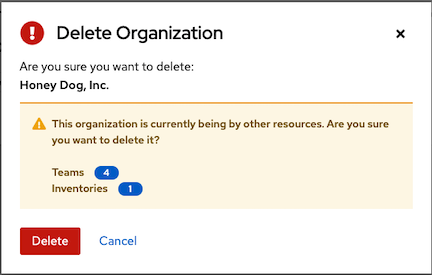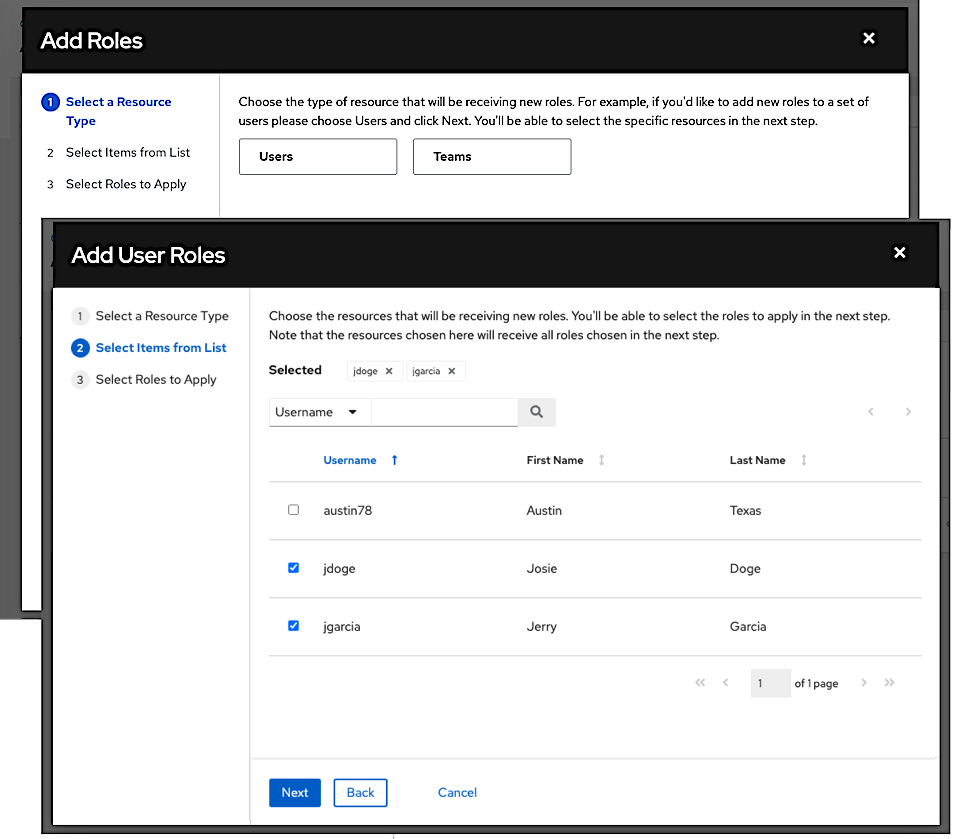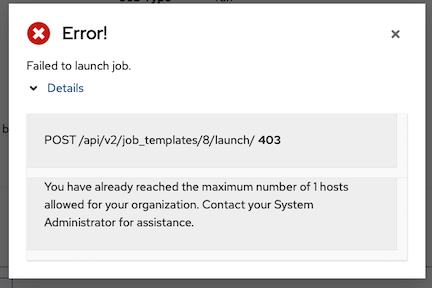7. Organizations¶
An Organization is a logical collection of Users, Teams, Projects, and Inventories, and is the highest level in the automation controller object hierarchy.

Access the Organizations page by clicking Organizations from the left navigation bar. The Organizations page displays all of the existing organizations for your installation. Organizations can be searched by Name or Description. Modify and remove organizations using the Edit and Delete buttons.
Note
A default organization is automatically created.

From this list view, you can edit the details of an organization ( ) from the Actions menu.
) from the Actions menu.
7.1. Creating a New Organization¶
You can create a new organization by clicking the Add button.

An organization has several attributes that may be configured:
Enter the Name for your organization (required).
Enter a Description for the organization.
The Max Hosts is only editable by a superuser to set an upper limit on the number of license hosts that an organization can have. Setting this value to 0 signifies no limit. If you try to add a host to an organization that has reached or exceeded its cap on hosts, an error message displays:

The inventory sync output view also shows the host limit error. Click Details for additional detail about the error.
Enter Instance Groups on which to run this organization.
Enter the name of the execution environment or search for an existing Default Execution Environment on which to run this organization. See Upgrading to Execution Environments in the Ansible Automation Platform Upgrade and Migration Guide for more information.
If used, enter the Galaxy Credentials or search from a list of existing ones.
Click Save to finish creating the organization.
Once created, automation controller displays the Organization details, and allows for the managing access and execution environments for the organization.

From the Details tab, you can edit or delete the organization.
Note
If deleting items that are used by other work items, a message opens listing the items are affected by the deletion and prompts you to confirm the deletion. Some screens will contain items that are invalid or previously deleted, so they will fail to run. Below is an example of such a message:

7.2. Work with Access¶
Clicking on Access (beside Details when viewing your organization), displays all the Users associated with this Organization and their roles.

As you can manage the user membership for this Organization here, you can manage user membership on a per-user basis from the Users page by clicking Users from the left navigation bar. Organizations have a unique set of roles not described here. You can assign specific users certain levels of permissions within your organization, or allow them to act as an admin for a particular resource. Refer to Role-Based Access Controls for more information.
Clicking on a user brings up that user’s details, allowing you to review, grant, edit, and remove associated permissions for that user. For more information, refer to Users.
7.2.1. Add a User or Team¶
In order to add a user or team to an organization, the user or team must already be created. See Create a User and Create a Team for additional detail. To add existing users or team to the Organization:
In the Access tab, click the Add button.
Select a user or team to add and click Next
Select one or more users or teams from the list by clicking the check box(es) next to the name(s) to add them as members and click Next.

In this example, two users have been selected to be added.
Select the role(s) you want the selected user(s) or team(s) to have. Be sure to scroll down for a complete list of roles. Different resources have different options available.
Click the Save button to apply the roles to the selected user(s) or team(s) and to add them as members.
The Add Users/Teams window closes to display the updated roles assigned for each user and team.

To remove roles for a particular user, click the disassociate (x) button next to its resource.

This launches a confirmation dialog, asking you to confirm the disassociation.

Note
A user or team with roles associated will retain them even after they have been reassigned to another organization.
7.3. Work with Notifications¶
Clicking the Notifications tab allows you to review any notification integrations you have setup.

Use the toggles to enable or disable the notifications to use with your particular organization. For more detail, see Enable and Disable Notifications.
If no notifications have been set up, you must create them from the Notifications option on the left navigation bar.

Refer to Notification Types for additional details on configuring various notification types.


